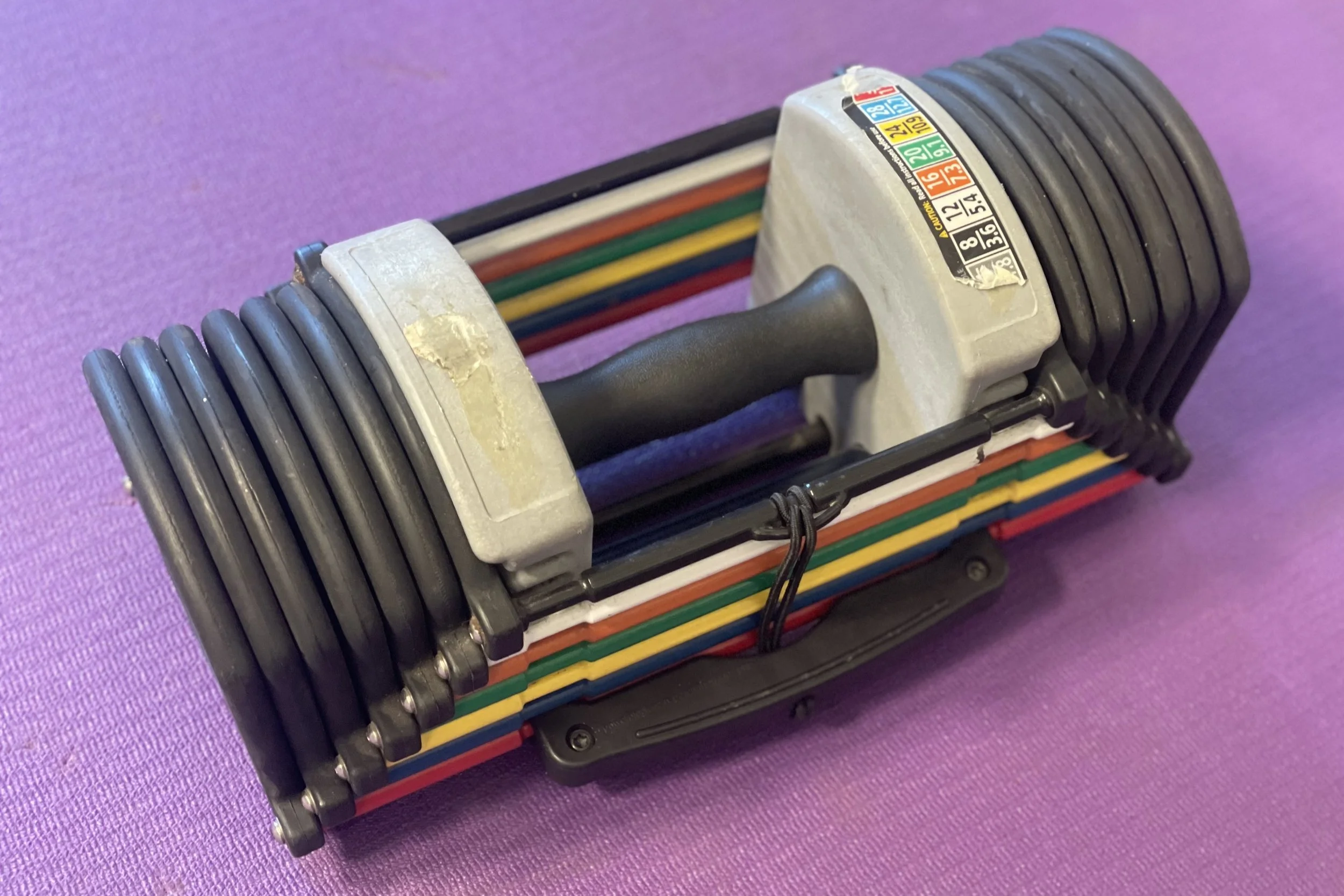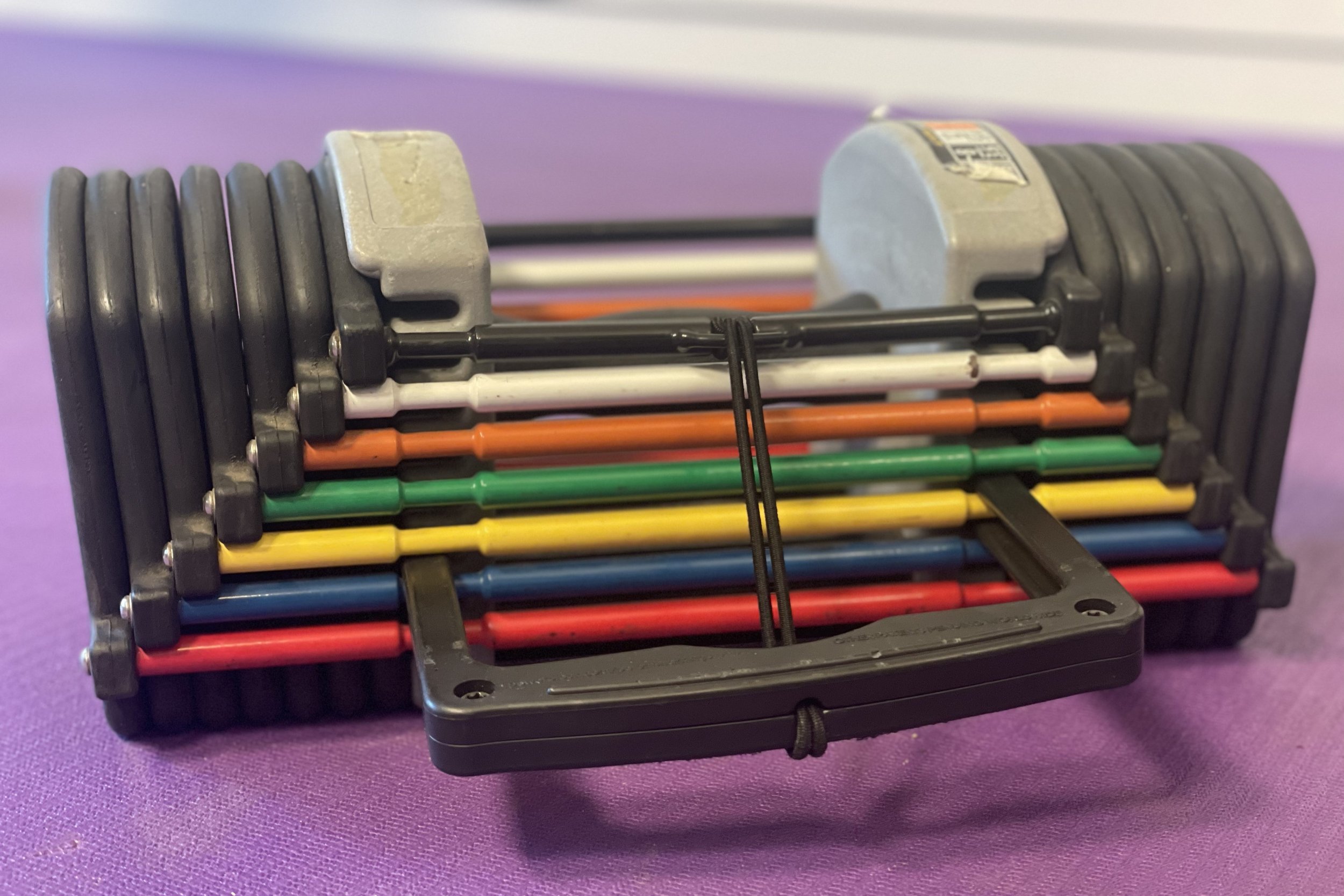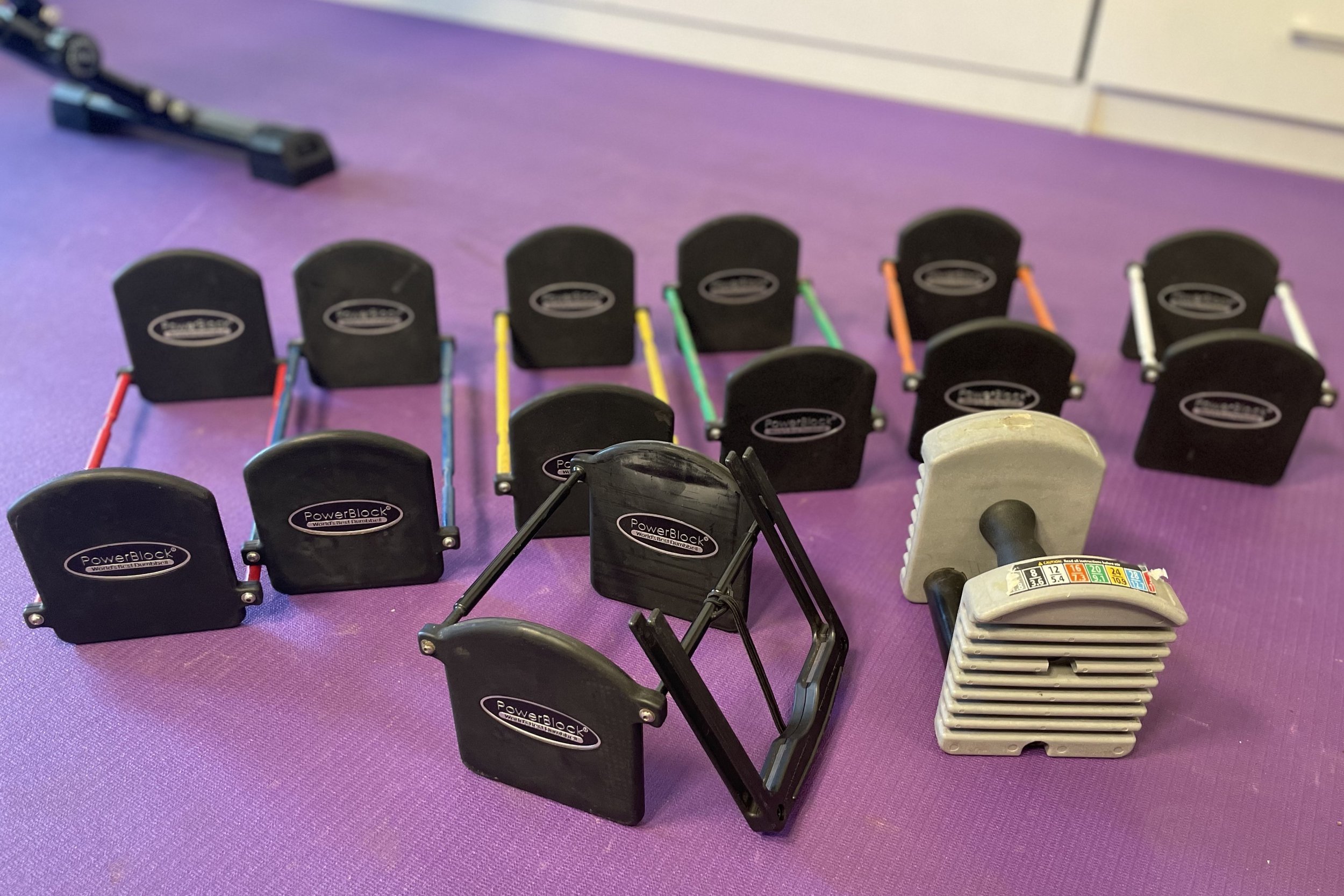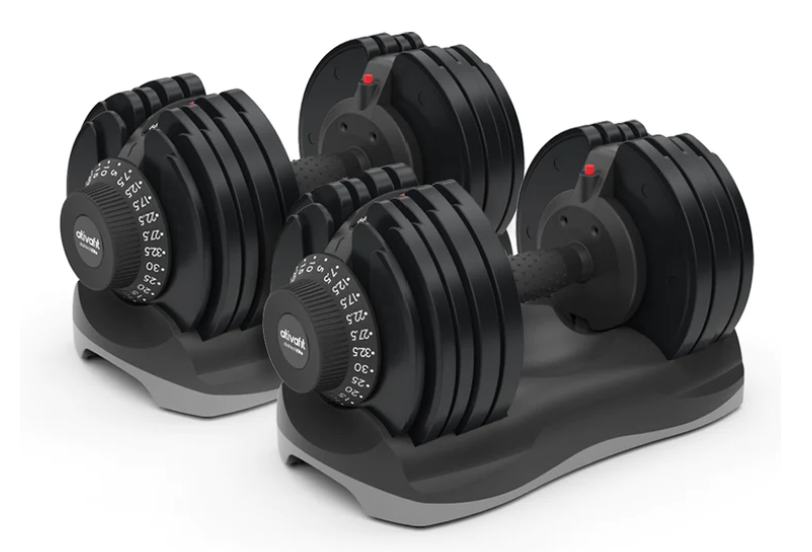Dumbbell Crash Course! Part 3: Dial-a-Weight (Adjustable Dumbbells)
Dial-a-Weight! Operators are standing by!
Hello there folks! This week in Dumbbell Crash Course I’ll be discussing adjustable dumbbells, or as I like to call them, “dial-a-weight.” As I discussed previously in chapters 1 and 2, there are lots of different dumbbell shapes and styles, each with their own advantages and disadvantages. But let’s face it; dumbbells take up space, and if you want to get stronger over time, just having one set of dumbbells ain’t gonna cut it. So what to do?
Adjustable weights to the rescue! Now just like regular dumbbells, adjustable dumbbells come in many shapes and forms. Let me show you a handful of types that I’ve encountered and give you some general tips for picking a set that’s right for you.
Just a note: adjustable dumbbell sets are NOT cheap. Depending on the weight range, you can be shelling out upwards of a few hundred bucks for each dumbbell. This makes sense considering how much you would pay to get the same amount of dumbbells individually (and a weight rack), but it also means that unlike building a dumbbell collection slowly, you will need to make a large financial commitment up front. And just like regular dumbbells, be sure to check the description to see whether the price listed is for a single dumbbell or a set.
Okay, let’s get this party started!
Adjustable Dumbbell Buyer’s Guide
Here are some things you should think about before you start looking at adjustable sets:
What weight range do you want? Do you plan on lifting heavy and want a set that will fill out the higher end of the weight range? Or are you new and don’t need to lift super heavy? Or maybe you just want a good range that you can start off with and grow into.
What weight increments do you need? Some weight sets adjust in 5lb increments which can be fine for a heavier weight range, but if you’re new to lifting, jumping from five to 10lbs can be quite the jump! Weight increments typically come in 2.5lb, 4lb or 5lb increments.
How will you use the weights? Will the weights be mostly for upper body exercises or lower body? WIll you typically use two weights at a time or hold one weight on both ends? Do you tend to stick to a few different sizes or do you need to switch out the weights frequently?
I’m going to group these by three main styles of adjustable dumbbell: powerblock, dial/slider, and mini-barbell.
My old beat up Powerblock set
Powerblock Sets
Powerblocks consist of a set of rectangular nesting weights that link together using a u-shaped pin on a handle. The center block containing the handle is the smallest weight; to add more, you slide the pin onto the color-coded block for the desired weight, then pull on the handle. The desired weight is selected and the unneeded weights stay on the ground.
Powerblock sets have upper limits of 32lbs, 50lbs, and 90lbs with weight increments of 4lbs, 2.5lbs and 5lbs, respectively. Depending on the model you can buy expansion packs if you need to go up in weight. On the left is my super-old 32lb / 4lb increment model. (The logo and color-coding stickers have seen better days.)
Pros: I really like how you can quickly adjust between weight sizes, especially if you’re moving down in weight. If you want a smaller weight, simply shift the pin up and leave the rest behind. I find this particularly handy if I’m taking these to train with someone and I don’t need the full range; I can leave the heavier weights at home and take only what I need. And I have never had a weight fall out on me; the weights are well constructed and durable.
Cons: Because of their block shape, Powerblocks are pretty clunky. Holding the weight on the ends can be challenging, especially if your hands get sweaty during workouts. And because of the larger form factor, the weights can more easily get in the way of certain moves (like side lunges). In terms of ease of use, I find that I often accidentally set the pin on two different levels, which is easy to fix but can be annoying if you’re trying to move quickly between two sizes.
Dial/Slider Sets
There are many companies that sell this style of weight. For this type, you have small disks that sit on a base. A dial indicator determines the weight by locking in to the required disks. When you lift the handle off of the base, you have the desired weight and the unused disks remain on the base. Some indicators use a rotating dial, while others use an indicator that slides back and forth.
Pros: This style of adjustable weights has a more traditional dumbbell shape and are a smaller form factor than Powerblocks which can make the dumbbells easier to handle. Selecting a weight is easy and does not require memorizing any color coding. In my experience I’ve found the weights to be pretty sturdy.
Cons: My biggest complaint with these styles is what I call the “return to base” factor. Because of the indicator locking system, you can’t switch weights without putting the dumbbell back on the base. If you want to move the dumbbells across the room you have to move the weight and the base together, otherwise you’ll be traveling back and forth to switch out the weight. And even if you’re reducing your weight, you still need to put the dumbbell back on the base otherwise you can’t move the dial. It makes sense for the design, but can be a little bit of a hassle. Also, sometimes putting the weight back on the base can be difficult if the free weights are not lined up properly.
Mini-barbell Sets
I call them “mini-barbells” because that’s what they look like to me, but I believe they’re just called “loadable dumbbells”. Basically, you buy a set of handles and collars (the clips that hold the plates on), and then you buy whatever plates you want to add onto the base. If you’re comfortable with barbells, these are pretty straightforward.
Pros: You can customize your weight range by purchasing the size and number of weight plates for your intended use. If you already have a barbell, you can use the same weight plates (provided they have the same inner diameter). If you want to add on to your set, you just need to buy additional plates as opposed to an expansion set or a new adjustable weight set. In terms of sturdiness, as long as the plates are clipped in properly these are great. You can treat them like you would regular barbell equipment. (Watch your toes though!) And if you like math, you’ll keep your brain sharp by adding up the weights in your head.
Cons: The handles typically weigh 10-15lbs on their own, so if you want something lighter, you’re out of luck. Also, to adjust the weight you’ll need to add or change the plates each time and lock them in with the collar, so changing between weights can be cumbersome. Like PowerBlocks, these weights will have a large form factor. Finally, if you don’t like math, you won’t enjoy having to calculate what weight you need/have.
And that concludes my Dial-a-Weight review! As you can see, I already own a set of Powerblocks, but I might be open to trying out the other two styles. How about you? Which type do you think would best suit your purposes? If you already own a set, what do you like/dislike about them and why?







